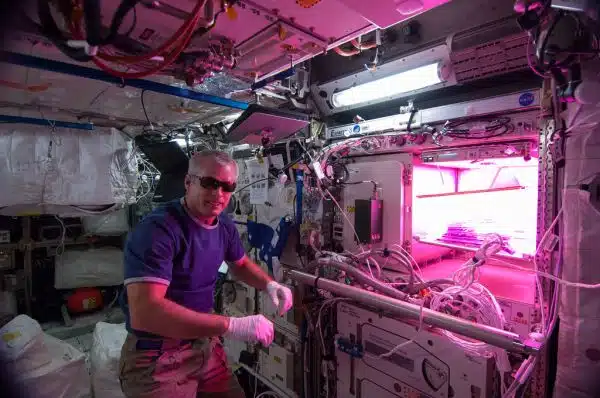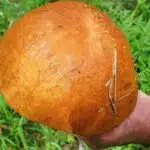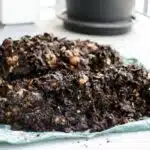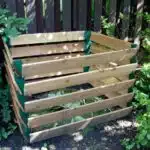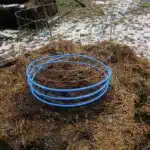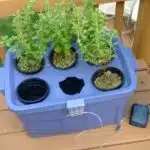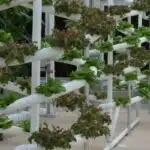When it comes to regrowing vegetables, many people turn to using scraps from their kitchen in an effort to save money and reduce waste. However, using scraps to regrow vegetables can lead to several issues that may negatively impact both the plant and the person consuming it. As a horticultural expert, I strongly advise against using scraps for regrowing vegetables.
Firstly, using scraps may result in an inadequate supply of nutrients for the plant. Scraps typically do not contain all the necessary nutrients that a plant needs to grow healthily. This can lead to stunted growth or even death of the plant. Additionally, using scraps may introduce harmful bacteria and pests into the soil which could affect other plants in the area. Furthermore, consuming these vegetables may pose a health risk as they are grown from potentially contaminated sources.
In conclusion, while it may seem like a cost-effective and eco-friendly solution, using scraps for regrowing vegetables is not advisable. The risks outweigh any potential benefits and there are many alternative methods available for growing healthy and nutritious produce. As horticultural experts, we must prioritize the safety of both our plants and consumers by recommending responsible gardening practices.
The Risks Of Using Scraps For Regrowing Vegetables
Regrowing vegetables from scraps has become a popular trend among people looking for sustainable gardening practices. While it may seem like a simple and cost-effective way to grow your own produce, there are potential risks involved that are often overlooked. One of the main concerns is the potential contamination of the scrap material used for regrowth.
The scraps used for regrowing vegetables may carry harmful bacteria or chemical residues from pesticides or fertilizers. This can lead to foodborne illnesses if consumed, posing a serious health risk to you and your family. Additionally, the use of contaminated scraps can have an environmental impact, as it promotes the spread of these harmful substances into soil and water sources.
Another risk associated with using scraps for regrowing vegetables is inadequate nutrient supply. Though some plants may sprout roots and leaves, they may not be able to reach their full potential without proper nutrients. Scraps do not contain all the necessary nutrients that plants need to thrive, and relying solely on them can result in stunted growth or poor quality produce. Thus, it is important to consider alternative methods for ensuring adequate nutrient supply when growing vegetables from scraps.
Given these concerns, it is crucial to exercise caution when attempting to regrow vegetables from scraps. While the idea of growing your own food may be appealing, it is important to prioritize safety and sustainability by exploring other options for starting a garden. Inadequate nutrient supply is just one of several factors that must be taken into account when growing healthy plants.
Inadequate Nutrient Supply
A common misconception among novice gardeners is that scraps are suitable for regrowing vegetables. However, this practice can lead to inadequate nutrient supply, stunting the growth or even leading to the death of the plant. According to a recent study, only 10% of nutrients are left in vegetable scraps after cooking or consumption.
Vertical gardening and hydroponic systems offer better alternatives for growing vegetables. Vertical gardening is an innovative technique that involves growing plants vertically against a wall or trellis, maximizing growing space in small areas. This method provides adequate nutrient supply and water circulation, promoting healthy plant growth. Hydroponic systems also offer an excellent solution for those with limited outdoor space or poor soil quality. These systems use nutrient-rich water instead of soil to provide essential nutrients to plants.
In conclusion, using scraps to regrow vegetables may seem like an easy and cheap solution; however, it can lead to inadequate nutrient supply, resulting in stunted growth or the death of the plant. Vertical gardening and hydroponic systems offer sustainable alternatives that promote healthy plant growth while maximizing space utilization. In the next section, we will explore how stunted growth or death of the plant can occur due to other factors beyond inadequate nutrient supply.
Stunted Growth Or Death Of The Plant
While it may seem intuitive to regrow vegetables from kitchen scraps, doing so can have detrimental effects on the growth and health of the plant. Inadequate nutrient supply is one reason why using scraps to regrow veggies is not recommended. The plant may not receive all the necessary nutrients for healthy growth, leading to stunted growth or even death of the plant.
Preventing stunted growth begins with ensuring that the soil has all the necessary nutrients for healthy plant growth. Using compost or organic fertilizers can help provide a rich source of nutrients for plants. Additionally, avoiding overwatering and providing adequate drainage can also prevent waterlogging, which can lead to root rot and ultimately death of the plant.
Avoiding plant death requires regular monitoring of the plants for signs of stress or disease. Removing diseased plants promptly can prevent the spread of disease to other plants in close proximity. Proper spacing between plants and good airflow can also reduce the risk of diseases spreading. By taking these precautions, gardeners can help ensure healthy plant growth and avoid premature death.
- Regular monitoring and removal of diseased plants.
- Proper spacing between plants.
- Good airflow around plants.
In summary, preventing stunted growth and avoiding plant death requires careful consideration of various factors such as nutrient supply, watering practices, disease management, and proper spacing. Gardeners who take these steps will be rewarded with healthy and productive plants in their gardens. However, introducing harmful bacteria and pests to your garden through improper handling practices is another factor that should be taken into account when regrowing vegetables from scraps.
Introduction Of Harmful Bacteria And Pests
It’s a common practice to use scraps to regrow vegetables. The idea of being resourceful and sustainable is appealing, but it can be dangerous. As the saying goes, “one man’s trash is another man’s treasure.” However, in this case, what seems like treasure could actually be a ticking time bomb.
Using scraps to regrow vegetables can lead to potential contamination and food safety concerns. Scraps that are not properly cleaned can harbor harmful bacteria that can cause foodborne illnesses. Moreover, using soil that is contaminated with pesticides or other chemicals can also pose health risks for consumers.
Horticultural experts recommend avoiding the use of scraps for regrowing vegetables altogether. Instead, opt for seeds or seedlings from a reputable source. Not only will this ensure that your fruits and vegetables are safe to eat, but it will also contribute to the overall health of your garden.
In light of the potential contamination and food safety concerns associated with using scraps to regrow vegetables, it’s important to take steps towards ensuring the safety of our produce. The next section will explore in depth the health risks for consumers when consuming produce grown from contaminated soil or scraps.
Health Risks For Consumers
Introduction of Harmful Bacteria and Pests
Regrowing vegetables from scraps may seem like a budget-friendly way to start your garden, but it can pose significant food safety risks to consumers. As mentioned earlier, using scraps can introduce harmful bacteria and pests into the soil and ultimately contaminate the produce grown from it. This contamination can lead to health risks for consumers and damage their trust in the food industry.
Health Risks for Consumers
Food safety is a top priority for all producers, marketers, and consumers. The use of scraps in regrowing vegetables compromises consumer protection by introducing potential health hazards to the food chain. Ingesting contaminated produce can lead to illnesses such as E.coli or Salmonella poisoning, which can have severe consequences such as hospitalization or even death. Therefore, it is crucial to avoid using scraps as a means of regenerating fresh vegetables due to the risk factors that come with it.
Alternatives to Using Scraps for Regrowing Vegetables
There are several safe alternatives that you can use instead of using scraps while still maintaining a budget-friendly approach when starting your garden. Purchasing quality seeds or seedlings from reputable suppliers ensures that you are growing healthy plants that are free from pests and diseases. Additionally, composting kitchen waste not only reduces the amount of organic waste sent to landfills but also provides nutrient-rich soil for your garden. By embracing these safer methods, you ensure that your harvest is not only fresh but also free from harmful contaminants.
To maintain high standards in food safety and consumer protection while still enjoying fresh produce at home, it is important to avoid using scraps when regrowing vegetables. Instead, adopt alternative methods such as purchasing quality seeds or seedlings and composting kitchen waste as safer ways of growing healthy plants without compromising on taste or budget.
Alternatives To Using Scraps For Regrowing Vegetables
One alternative to using scraps for regrowing vegetables is by utilizing hydroponic systems. This method is particularly useful for those who have limited space or access to outdoor gardening. Hydroponic systems allow plants to grow in a controlled environment, without the need for soil. Instead, nutrients are delivered directly to the roots through water. This method can result in faster growth and higher yields compared to traditional gardening methods.
Another option is container gardening, which involves growing plants in pots or containers. Container gardening allows for flexibility in terms of location and can be done both indoors and outdoors. It also allows for better control over soil quality and drainage, which can lead to healthier plants. Additionally, vertical farming can be utilized within container gardening to maximize space usage.
Companion planting is another alternative that involves planting different crops together that benefit each other’s growth. For example, planting beans with corn provides natural support for the corn while the beans fix nitrogen into the soil, benefiting both crops. Companion planting also helps deter pests and diseases naturally without the use of pesticides.
Transition: While these alternatives offer effective solutions for growing fresh produce at home, it’s important to consider how we dispose of our waste products too. One solution? Composting for nutrient-rich soil…
Composting For Nutrient-Rich Soil
Organic waste management is an essential activity in gardening and farming. Composting is one of the most efficient ways to manage organic waste, as it transforms food scraps and yard debris into a rich soil amendment that can enhance soil fertility, structure, and water-holding capacity. Moreover, composting benefits the environment by reducing the amount of waste that ends up in landfills or incinerators, thereby reducing greenhouse gas emissions and promoting sustainable living.
Composting involves collecting organic materials such as fruit and vegetable peels, eggshells, coffee grounds, grass clippings, leaves, and wood chips. These materials are then mixed together in a compost bin or pile with some water and air to create an ideal environment for microorganisms to break them down into humus-rich compost. The process takes several weeks to several months depending on the size of the heap and the conditions provided. However, once completed, the resulting compost can be used as a soil amendment or top dressing for plants.
The benefits of using compost in gardening are numerous. Compost improves soil structure by increasing its porosity and enabling better drainage and aeration. It also adds nutrients such as nitrogen, phosphorus, potassium, calcium, magnesium, and micronutrients like iron and zinc that are essential for plant growth. Furthermore, compost helps retain moisture in soil by acting as a sponge that holds water during dry periods. By incorporating compost into your garden beds or containers regularly, you will promote healthy plant growth while reducing your carbon footprint.
With nutrient-rich soil at your disposal through proper organic waste management via composting benefits abound for gardeners everywhere! But how do we ensure our plants get off to the best start possible? Step forward seed starting for healthy plants!
Seed Starting For Healthy Plants
Composting for nutrient-rich soil is a great way to ensure that your plants receive the necessary nourishment. However, relying solely on scraps to regrow veggies is not the ideal method. While it may seem like a cost-effective and sustainable solution, it can actually do more harm than good.
Using scraps to regrow veggies can lead to stunted growth, disease, and nutrient deficiencies. This is because scraps do not provide all the necessary nutrients that are required for healthy plant growth. Furthermore, they can carry diseases and pests that can easily spread to other plants in your garden. It’s essential to use high-quality soil and fertilizer if you want your plants to thrive.
Instead of relying on scraps, consider hydroponic gardening as an alternative method. Hydroponics offer several benefits such as faster growth rates and higher yields. With hydroponic gardening, you have complete control over the growing environment, including light and nutrients. Proper lighting is crucial in hydroponics as it helps the plant photosynthesize effectively. By providing adequate light through LED grow lights or natural sunlight exposure, you can achieve optimal results.
In summary, while composting for nutrient-rich soil is beneficial, using scraps alone to regrow veggies isn’t recommended due to its limitations in providing proper nutrition and the risk of spreading disease and pests. Instead of resorting to this method, consider exploring the benefits of hydroponic gardening with proper lighting for optimal plant growth. Remember that using proper soil and fertilizer are also important factors in ensuring successful plant growth.
Using Proper Soil And Fertilizer
Using proper soil and fertilizer is essential for healthy plant growth and optimal yield. Organic gardening involves the use of natural methods to enrich soil with nutrients. This can be achieved by using compost, manure, or other organic matter to improve soil structure, moisture retention, and aeration. It is important to avoid synthetic fertilizers, which contain harmful chemicals that can leach into groundwater and harm beneficial microorganisms in the soil.
Hydroponic systems are another alternative to traditional gardening methods that rely on soil. These systems use water-based solutions enriched with essential nutrients to feed plants directly. Hydroponic systems are highly efficient and require less space than traditional gardens since they do not rely on soil for plant growth. However, hydroponic systems require specialized equipment and careful management to ensure optimal plant health.
Regardless of the gardening method used, it is important to prioritize safe and responsible practices. This includes proper waste disposal, using non-toxic pest control methods, and avoiding the use of harmful chemicals in both indoor and outdoor environments. By adopting these practices, gardeners can ensure that their produce is safe for consumption while minimizing negative impacts on the environment.
Prioritizing Safe And Responsible Gardening Practices
Community education is vital when it comes to prioritizing safe and responsible gardening practices. It is essential to educate the community on the dangers of using scraps to regrow veggies. While this practice may seem cost-effective and environmentally friendly, it can result in devastating consequences. Scraps are often contaminated with harmful chemicals or pathogens that can jeopardize human health.
Sustainable gardening practices should be a top priority for those who wish to contribute positively to the environment. Organic farming is an excellent way to reduce the environmental impact of agriculture. It promotes biodiversity, reduces water pollution, and conserves soil quality. Furthermore, organic farming also enhances soil fertility and helps combat climate change. Sustainable gardening practices such as composting, crop rotation, and natural pest control methods can help ensure a healthy ecosystem for future generations.
The environmental impact of gardening practices cannot be overlooked. Harmful chemicals used in conventional farming have adverse effects on the environment, including soil degradation, air pollution, and water contamination. By adopting sustainable gardening practices such as organic farming, we can mitigate these negative impacts on the environment while promoting healthy living conditions for ourselves and our communities. Therefore, it is necessary to prioritize safe and responsible gardening practices that promote sustainable agriculture for a better tomorrow.
Conclusion
Using scraps to regrow vegetables may seem like a cost-efficient and eco-friendly way to grow fresh produce, but it comes with significant risks. When scraps are used as a planting medium, the plant may not receive an adequate nutrient supply, leading to stunted growth or even death. Additionally, using scraps may introduce harmful bacteria and pests into the garden ecosystem.
Furthermore, regrowing vegetables from scraps can pose health risks for consumers. The plants grown from scraps may absorb toxins present in the material used for planting. Therefore, it is crucial to prioritize safe and responsible gardening practices by composting for nutrient-rich soil or seed starting for healthy plants. Using proper soil and fertilizer can also ensure that the plant receives sufficient nutrients for optimal growth.
In conclusion, while using scraps to regrow vegetables may seem like a sustainable solution, it is not worth the potential risks. As horticultural experts suggest, prioritizing safe and responsible gardening practices such as composting and seed starting can lead to healthier plants and safer consumption of fresh produce. Remember that healthy plants require proper care and attention to thrive – shortcuts may result in undesirable outcomes!
Image Credits
- “Veggie is Up and Running! (NASA, International Space Station, 05/13/14)” by NASA’s Marshall Space Flight Center (featured)

